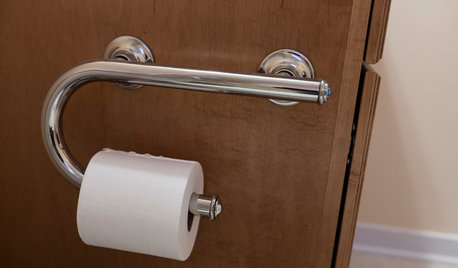Fumbled Poop
Well, this is one heck of a first post. Sorry!
We have a healthy, established indoor worm bin with European night crawlers and red wrigglers. We use shredded junk mail (no slicks, cellophane, etc) and vegetable waste from the kitchen.
We have one indoor only cat, who is rarely but occasionally outside and/or in contact with other animals.
We use an all natural corn based biodegradible cat litter.
We've never composted our cat poop/urine clumps and we didn't intend to do so. Unfortunately our pet sitter thought that the composting bin was intended for disposing cat litter. We instructed her to flush the scooped litter in the toilet, as the litter is flushable, but there was a time lapse between our instructions and the pet sitting. The worm bin is in the laundry room along with the litter box, so I understand the confusion. She took care of our cat a few years ago before we had the worm bin, and before we started using flushable litter. She's been a great pet sitter and she meant no harm- she thought she was doing what we wanted!
Unfortunately, she'd taken care of our cat twice, and deposited about two days worth of cat poop and pee clumps in the worm bin on two occasions, before we realized what was happening.
In my defense, the yellow clumps of cat pee looked remarkably like something that might grow on the surface of a worm bin if left unturned for several days of vacation. The poop apparently "disappeared" quickly; evidently the worms really, really liked it.
We noticed that the worm bin had a bit of unique odor when we returned from our trip after the first "fumbled poop" incident, but it didn't smell bad and it didn't smell like litter box. It just smelled like worm bin, only more so. Normally we don't smell the worm bin unless we turn it, then it just smells earthy. In this case the aroma was a bit richer and emanated from the bin on its own. I churned the bin and the smell went away. Little did I know that I was churning cat pee and poop. Interesting side note- I noticed that a LOT of worms had traveled up to the top tray of the worm bin, apparently to the cat poop and pee clumps. This is not usually the case; our worms tend to like the middle and lower trays.
After the next trip I realized that the contents of the litter box had been deposited in the worm bin. I scooped out what I could and flushed it.
Until now we've used our worm castings and worm tea in our vegetable garden. Now what? Is our worm bin "contaminated"? Is it a disease risk? I have no idea whether our cat has toxoplasmosis. He's tested negative for worms in the past. I'm not willing, at this moment, to dump a bunch of $$$ at the vet getting the cat screened for parasites just to save the worm bin.
I've always churned my worm bin by hand- now I'm a little squicked about that.
What to do? What to do? If anything at all...
Also- we are in the process of acquiring a Labrador Retriever puppy. I am considering an outdoor, buried dog poop composter. I guess that if this worm bin is permanently compromised, I could put the worms into the outdoor dog poop bin and start over inside. We don't plan to use the dog poop compost on the vegetable garden.
Suggestions? Insights? and my apologies for the auspicious beginning.







alabamanicole
equinoxequinox
Related Professionals
Piqua Landscape Architects & Landscape Designers · College Park Landscape Contractors · Cornelius Landscape Contractors · Cupertino Landscape Contractors · Fort Atkinson Landscape Contractors · Inglewood Landscape Contractors · Lees Summit Landscape Contractors · Middle River Landscape Contractors · Mission Landscape Contractors · Pacifica Landscape Contractors · Secaucus Landscape Contractors · Delhi General Contractors · Lincoln General Contractors · Niles General Contractors · Tabernacle General Contractorspjames
becasunshineOriginal Author
becasunshineOriginal Author
randomz
gtippitt
Karchita
becasunshineOriginal Author
becasunshineOriginal Author
Stormygale
Stormygale